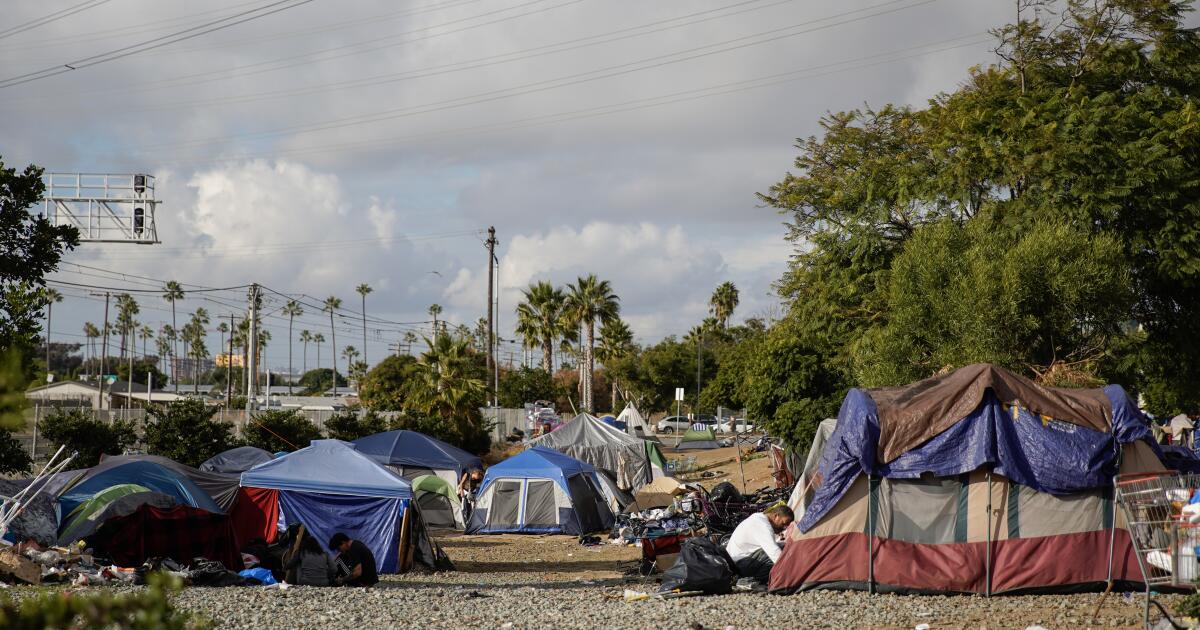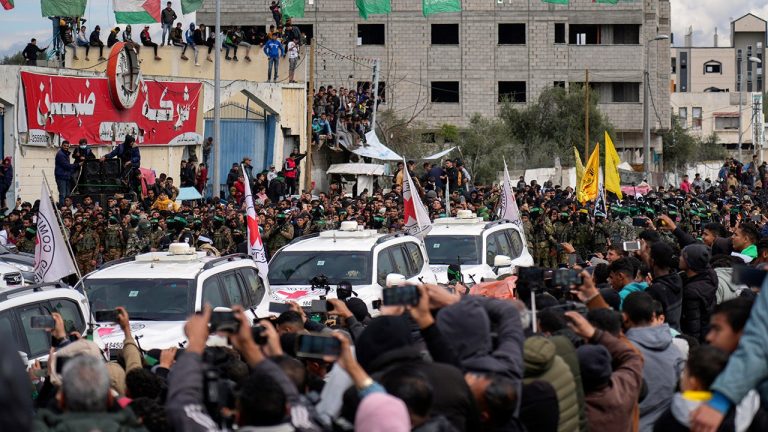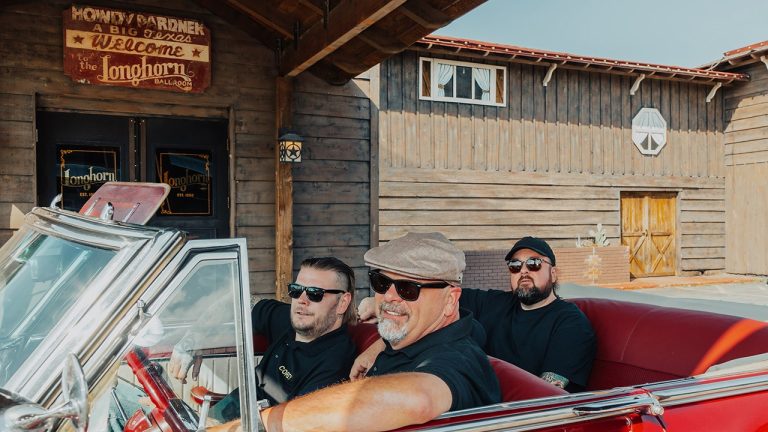

When Chula Vista closed a park in 2022 because it had become an encampment for homeless people, those evicted relocated to a nearby street.
The city is now struggling to keep Industrial Boulevard clear for pedestrians and free from the same illicit activities that had reportedly taken place at Harborside Park. Since the controversial closure, the boulevard has been at the center of a public debate many other governments across California are having about public safety, homelessness and legal challenges to camping bans.
Last week, the City Council decided it was time to also shut down areas along the boulevard in an attempt to curb encampments. It also decided on other efforts that could lead to increased police enforcement and the development of a low-barrier shelter, following a lengthy discussion about short- and long-term measures.
“We have been a leader in putting out homeless solutions, but this is a major issue on Industrial,” said Mayor John McCann. “We need to actually take immediate action.”
Chula Vista has more than 300 people living on the streets, according to the 2023 point-in-time count, though officials and nonprofits estimate the figure to be far larger. Most reside in District 4, which includes Industrial Boulevard. A new tally, set for Jan. 25, should quantify homelessness in the area and the rest of the county.
The area of most concern on Industrial Boulevard is between Palomar and Naples Street, where there is a mixture of commercial and residential properties. It’s frequented by children on their way to Harborside Elementary School, people seeking services at a county family resource center and users of the Palomar Street Transit Center.
Over the past months, both the west and east sides of the boulevard turned into a tent city and the scene of reported crimes, such as theft, assaults, prostitution, tagging and drug use, said Chula Vista Police Lt. Ernie Pinedo.
Trash has also been a challenge, he said. On Jan. 12, for instance, the area was cleared around 8 a.m. of more than 60 tents. By 8 p.m., about 17 were set up again. On Friday, more than a dozen were seen along the west side of the street.
The San Diego Metropolitan Transit System recently installed fencing on the east side to prevent people from setting up camp. Now the city plans to block off the west side, which could cost up to $350,000.
Councilmember Jose Preciado said cutting access to yet another place would just push homeless individuals to set up encampments elsewhere.
Given testimonies from local business owners and children who said they felt threatened, McCann said that “not knowing where these individuals will migrate to is not an excuse for inaction.”
The mayor asked city staff and police what else could be done to prevent the sprawling encampments from returning.
Police Chief Roxana Kennedy said laws would need to change so that local governments can restore their authority over sidewalks. Following a 2018 Ninth Circuit Court ruling in Martin v. Boise, arrests are not permissible if cities have inadequate shelter beds available for the homeless.
“It’s not always about arresting, but sometimes arresting is a solution,” she said.
Many officials in Western states, including Gov. Gavin Newsom, are arguing that the Boise ruling is preventing them from more quickly curbing encampments, which they say must be cleared for the well-being of those residing in them and the betterment of their communities.
The U.S. Supreme Court has agreed to decide whether the homeless have a constitutional right to camp in public spaces when no other shelter is available.
“California has invested billions to address homelessness, but rulings from the bench have tied the hands of state and local governments to address this issue,” said Newsom in a statement. “The Supreme Court can now correct course and end the costly delays from lawsuits that have plagued our efforts to clear encampments and deliver services to those in need.”
In the meantime, Chula Vista will consider adopting its own anti-camping ordinance.
Council members also agreed last week to hire more Homeless Outreach Team members. Additionally, they agreed to look into options to establish a second shelter, such as the city of San Diego’s new safe sleeping sites, or to open a safe parking site sooner on the property of a motel it recently purchased for homeless housing that still needs to be refurbished.
The City Council will have to vote on the details, including costs, of each initiative at a future meeting.








